
Transit Briefs: CTA, Minn. Met Council, San Diego MTS, SBCTA, WMATA
Written by Marybeth Luczak, Executive Editor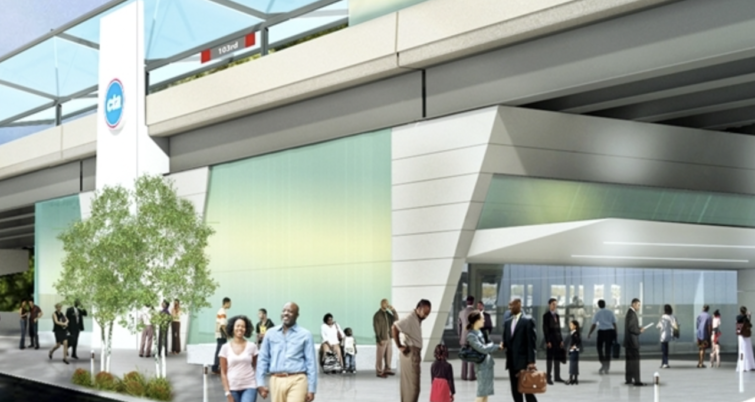
CTA has released a Request for Proposals to the three pre-selected contracting teams that demonstrated the ability to design and build the $3.6 billion Red Line Extension in a Request for Qualifications process that began last year. (CTA Rendering)
Chicago Transit Authority (CTA) issues a Request for Proposals (RFP) to build Red Line Extension track structure and stations, and hits the ridership “million mark” on multiple days, a post-pandemic first. Also, Minnesota’s Metropolitan Council announces a grant agreement that will fund work on the Metro Transit Blue Line extension project through 2024; San Diego Metropolitan Transit System’s (MTS) Board signs off on measures to improve operations, accessibility and security; San Bernardino County Transportation Authority (SBCTA) takes delivery of the ZEMU (Zero-Emissions Multiple Unit) from Stadler; and Washington Metropolitan Area Transit Authority (WMATA) delays until next year the full switch to automatic train operations (ATO).
CTA
CTA has released an RFP to the three pre-selected contracting teams that demonstrated the ability to design and build its $3.6 billion Red Line Extension in a Request for Qualifications (RFQ) process that began last year.
The teams—FH Paschen, Ragnar Benson, Milhouse and BOWA Joint Venture; Kiewit Infrastructure; and Walsh VINCI Transit Community Partners—will submit proposals for extending the Red Line 5.6 miles from 95th Street to 130th Street and for adding four new, fully accessible rail stations near 103rd Street, 111th Street, Michigan Avenue and 130th Street, and multimodal connections at stations, including bus, bike, pedestrian, and park and ride facilities. (A new rail yard and maintenance shop near 120th Street will be delivered under a separate project contract.)
According to CTA, the proposals will be considered on a variety of criteria, including experience, price, workforce programs, inclusion of Disadvantaged Business Enterprise (DBE)-certified firms and other minority owned firms in the project, and other factors. CTA said it expects to award a contract in 2024. Major construction for project is slated to begin in 2025 pending federal approvals, and pre-construction (property demolition and advanced utility relocation) work is anticipated to start in 2024.
“Today [Sept. 14] we moved yet another step closer to providing residents of the Far South Side with access to rail service by moving to phase two of the procurement process,” CTA President Dorval R. Carter Jr. said. “In this phase, we issue the RFP to the qualified firms—one of which will ultimately build the Red Line Extension. This follows the recent great news of a nearly $2 billion pledge from the federal government to fund the project. The Red Line Extension Project represents equity for the underserved South Side community, giving them a rail line that extends to the city limits.”
In a related development, the “Transit-Supportive Development Plan” for the Red Line Extension has received a 2023 Strategic Plan Award from the American Planning Association-Illinois Chapter (APA-IL).
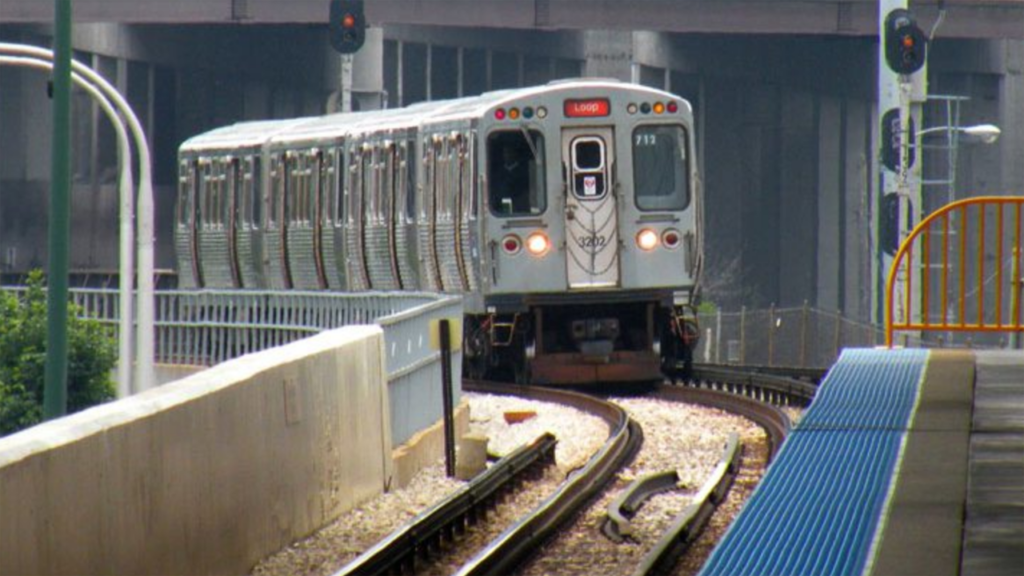
Separately, CTA on Sept. 14 reported providing more than one million rides on trains and buses multiple times in late August and early September, marking the first time the agency has recorded such daily ridership on multiple days and in back-to-back weeks since the pandemic.
According to CTA, more than one million rides were recorded on the following four days: Tuesday, August 29; Wednesday, August 30; Wednesday, September 6; and Thursday, September 7, the latter of which saw more than 1,033,000 rides, the highest daily ridership level to date since before the pandemic. In between these record-breaking ridership days, CTA said, overall ridership was higher than usual, peaking at more than 964,000 rides on August 31, and more than 992,000 rides on September 1.
“Students returning to classrooms for the 2023-2024 school year have helped contribute to this ridership jump,” CTA said. “The fall months are typically the highest ridership months for the CTA, suggesting that additional ridership milestones could occur in the weeks ahead.”
Metropolitan Council
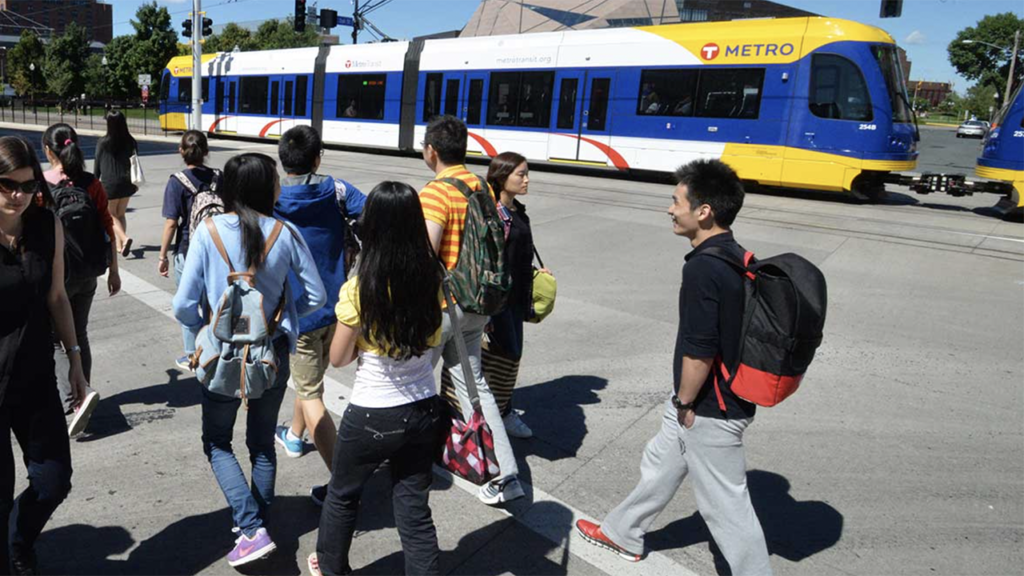
Metropolitan Council members and the Hennepin County Board of Commissioners in Minnesota have approved a grant agreement that will provide $75.3 million in county funds to keep work going through 2024 on the Metro Blue Line Extension light rail project, the Metropolitan Council reported Sept. 14.
The funding will allow the project to continue the engineering and consulting services necessary to advance design and environmental analysis; continue outreach and engagement efforts; advance implementation of strategies to “build community prosperity and prevent displacement”; update ridership projections; prepare an updated cost estimate and schedule; and prepare plans and other technical information required to seek municipal consent from cities along the corridor.
According to the Metropolitan Council, the funding agreement:
- Authorizes agreements with funding partners for each project phase.
- Provides a new governance model. A Project Decisions Board will be formed to approve and authorize major project decisions. It will comprise two county commissioners, one commissioner from the regional railroad authority, and two Metropolitan Council members.
- Covers an integrated project office with staff from both Hennepin County and Metropolitan Council leadership roles, who will continue to work collaboratively to deliver the project.
- Covers the streamlining of reporting and processes that will be implemented to maximize efficiencies for both parties.
- Clarifies financial roles. The Metropolitan Council will be responsible for federal funds in a future Full Funding Grant Agreement (FFGA), with its contributions limited to FFGA and any funds provided to the Metropolitan Council specifically for the Blue Line Extension. The Metropolitan Council is also responsible for future operations and capital maintenance (not covered in this Capital Grant Agreement). Hennepin County is responsible for the local share of funding in engineering and construction phases, including project start-up costs. Through the new Project Decisions Board, both parties have approval of project budget, contract awards and change orders.
The Metropolitan Council also reported that the project team can now advance design plans and complete the municipal consent process beginning in summer 2024 to confirm the final route.
“The proposed Capital Grant Agreement emphasizes partnership, collaboration, shared decision-making, risk management strategies, and transparency within a new governance model,” Metropolitan Council Chair Charlie Zelle said. “We value our strong collaborative partnership with Hennepin County as we continue to innovate in delivering the Blue Line Extension project to connect people to opportunities and bring transformative benefits to the communities it serves.”
Separately on Sept. 14, the Metropolitan Council reported that the Blue Line Extension Corridor Management Committee has “signaled their support for advancing the analysis of the staff-recommended light rail track route and general station locations for the Blue Line Extension light rail project.”
The advisory body of elected officials and non-elected community representatives passed a resolution Sept. 14 in support of the Metropolitan Council and Hennepin County continuing to advance the track route and stations through the federal environmental review process. The route will be further studied through preparation of a Supplemental Environmental Impact Statement.
“This is a big milestone for the project,” Project Director Christine Beckwith said. “Now that we have a better idea of where our tracks could go to best serve the community and general station locations to study, we will be able to develop enough detail to answer questions about how the project will benefit residents and businesses. We will also be able to address how to avoid or address impacts during construction and from train operations.”
First introduced at the August Corridor Management Committee meeting, the proposed track route extends the existing Metro Blue Line 13.4 miles northwest from Target Field Station connecting north Minneapolis, Robbinsdale, Crystal, and Brooklyn Park and serving surrounding communities. From north to south, the general route and 12 station locations are:
- Brooklyn Park: West Broadway Avenue to County Road 81, with stations at Oak Grove Parkway, 93rd Avenue North, 85th Avenue North, Brooklyn Boulevard, and 63rd Avenue North.
- Crystal: County Road 81 with a station at Bass Lake Road.
- Robbinsdale: County Road 81 with stations near 40th Avenue North and Lowry Avenue.
- Minneapolis: West Broadway Avenue in north Minneapolis with a station at Penn Avenue; 21st Avenue North between North James Avenue and Washington Avenue North, with stations near James Avenue North and Lyndale Avenue North; Washington Avenue to 10th Avenue North with a station near Plymouth Avenue; and Oak Lake Avenue to 7th Street North, connecting to Target Field Station in downtown Minneapolis.
The Supplemental Draft Environmental Impact Statement will identify potential project impacts associated with the proposed route, the Metropolitan Council reported. These include business and transportation impacts; impacts to historic properties; land use changes and parks; visual impacts, safety; impacts to soils, water and geological resources; and noise and vibration.
Project staff members are preparing the document for submittal to the Federal Transit Administration, the Metropolitan Council said, and they will continue to evaluate the location and number of stations, considering the project principles and federal rating criteria.
According to Metropolitan Council, updated ridership projections are expected in early 2024; the Supplemental Draft Environmental Impact Statement is anticipated in Spring 2024; the municipal consent process will begin to confirm final route in summer 2024; an updated cost estimate is slated for 2024; the final design is expected for 2024-2025; construction is slated to start in 2026-2027; and the opening is anticipated for 2030.
San Diego MTS
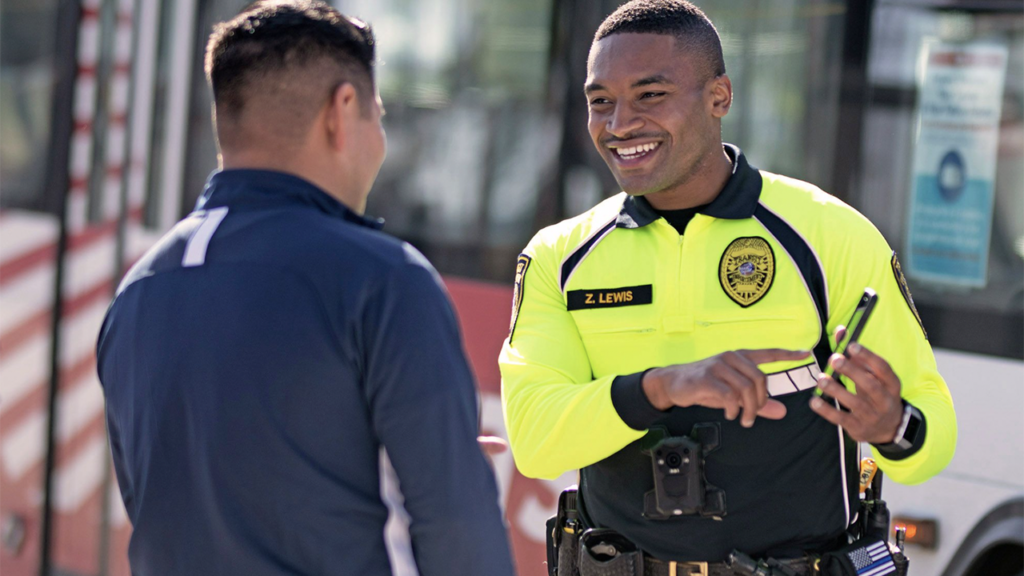
The San Diego MTS on Sept. 14 approved the implementation of a credit card “tap to pay” fare feature, which will allow riders to tap their physical credit cards or smart device-enabled credit cards on PRONTO validators on MTS or North County Transit District (NCTD) stations. They also signed off on the addition of 34 more Code Compliance Inspectors (CCIs) to help patrol MTS’ transit system, which includes more than 100 bus routes and three Trolley lines in 10 cities and unincorporated areas of San Diego County, Calif. The approved security increase, MTS said, will boost the total number of CCIs from 56 to 90, a 60% increase. The total annual cost will be approximately $4.2 million. The agency also has 200 private security officers deployed through its contracted private security firm, Inter-Con.
“The security and comfort of our riders, and employees is MTS’ main priority,” said Stephen Whitburn, MTS Board Chair and San Diego City Councilmember, District 3. “A stronger presence of security on the system and a more efficient payment system for riders on the go is something we’ve heard from the community, and today’s action put words into action. I want to thank the MTS stakeholders and riders who have provided feedback on these initiatives, and I think it will go a long way toward bringing even more riders back to the system.”
SBCTA
SBCTA on Sept. 13 reported that ZEMU, the United States’ first compliant zero-emission passenger trainset powered by hybrid hydrogen fuel cell and battery technology, has arrived after being manufactured and undergoing dynamic testing by Stadler in Switzerland (see video above). In 2024, SBCTA is slated to debut the two-car ZEMU trainset on the new nine-mile, five-station Arrow passenger rail corridor between San Bernardino and Redlands, Calif., which began operations last October. The trainset will run alongside the current low-emission Stadler FLIRT DMUs.
To support ZEMU operations, the existing Arrow Maintenance Facility will be upgraded to facilitate hydrogen storage, refueling and required safety enhancements, according to SBCTA. The facility is currently in the design phase and construction is expected to begin in late 2023.
The trip, a joint effort of Alstom and its partners—the government of Quebec, Chemin de fer Charlevoix (Train de Charlevoix), Harnois Énergies, HTEC and Accelera by Cummins (the new brand for Cummins’ New Power business segment)—operated 56 miles between the Parc de la Chute-Montmorency in Quebec City to Baie-Saint-Paul, in the heart of the UNESCO-listed Charlevoix Biosphere Reserve along the St. Lawrence River.
The Coradia iLint is self-propelled with HFC technology supplied by Accelera by Cummins, which has operations in Ontario, and is powered by green hydrogen produced by Harnois Énergies at its Quebec City site.
WMATA
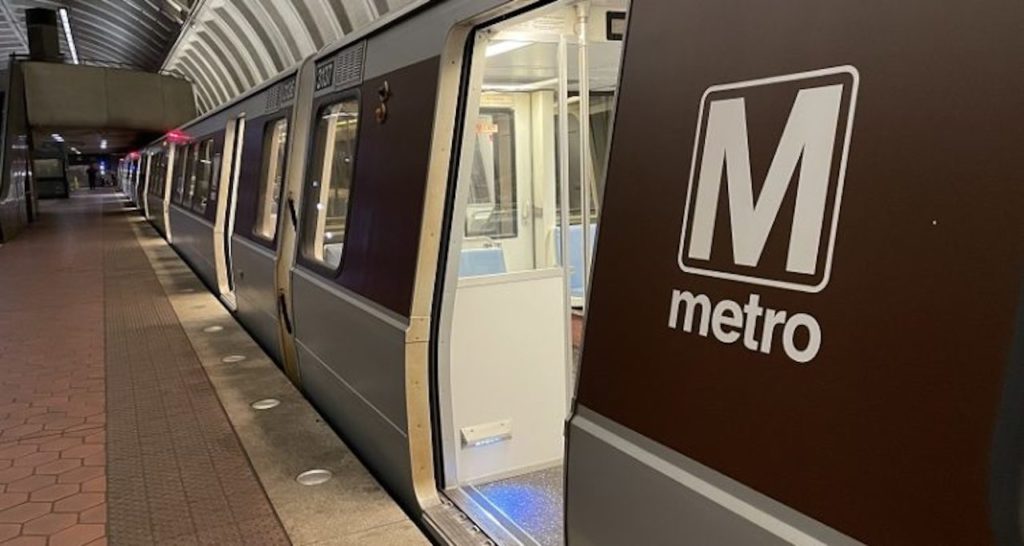
WMATA officials on Sept. 14 reported that they “will move more slowly to automate portions of the rail system in the coming months to ensure each step meets safety standards and has approval” of the Washington Metropolitan Safety Commission, its regulatory agency, according to The Washington Post.
WMSC officials last month said WMATA “wasn’t on track to meet its own ATO safety standards or to obtain the commission’s approval for the changes,” the newspaper reported. Systemwide ATO rollout had been planned for late 2023; it has now been moved to first-quarter 2024.
The transit authority will start conversion to ATO this fall on the Red Line with the reinstallation of an automatic railcar door system, which would be activated at stations, according to The Post.
“We’ve moved forward with prioritizing the progression of our auto-door functionality so that we can provide immediate benefits to our customers and the pain points that they’ve expressed,” Tiffani Jenkins, a WMATA Senior Vice President heading ATO efforts, told the transit authority’s Board of Directors, according to The Post.
When WMATA opened in 1976, it ran using ATO until a fatal collision in 2009. “The system has never returned, despite multiple investigations determining it didn’t play a role in the crash that killed nine people and injured 80 in Northeast Washington,” according to The Post. “Bringing the system back, transit leaders say, would lead to fewer delays, a smoother ride, energy savings and improved safety by reducing human error. Metro [WMATA] officials also say it would modernize train operations and lure new customers after losing nearly half of daily ridership during the pandemic.” It is also slated to save WMATA up to $10 million annually, the newspaper said.
“We are trying to move something forward that hasn’t moved here in like 13-plus years,” said WMATA General Manager Randy Clarke, according to The Post. “[ATO] is no question the safest way to run the system. It’s cost-efficient and it’s much better for customers. We wanted to do this and do it right.”



